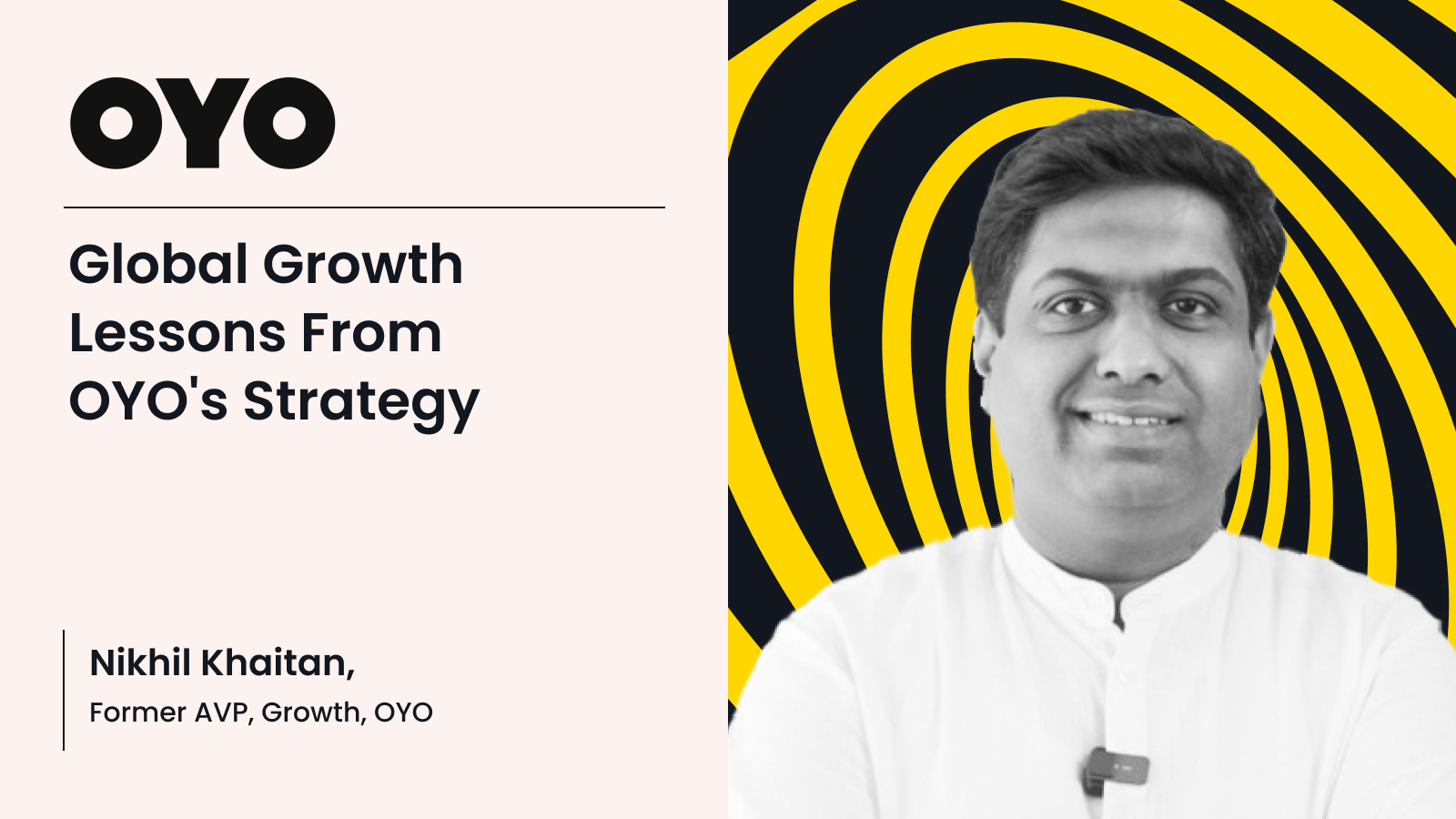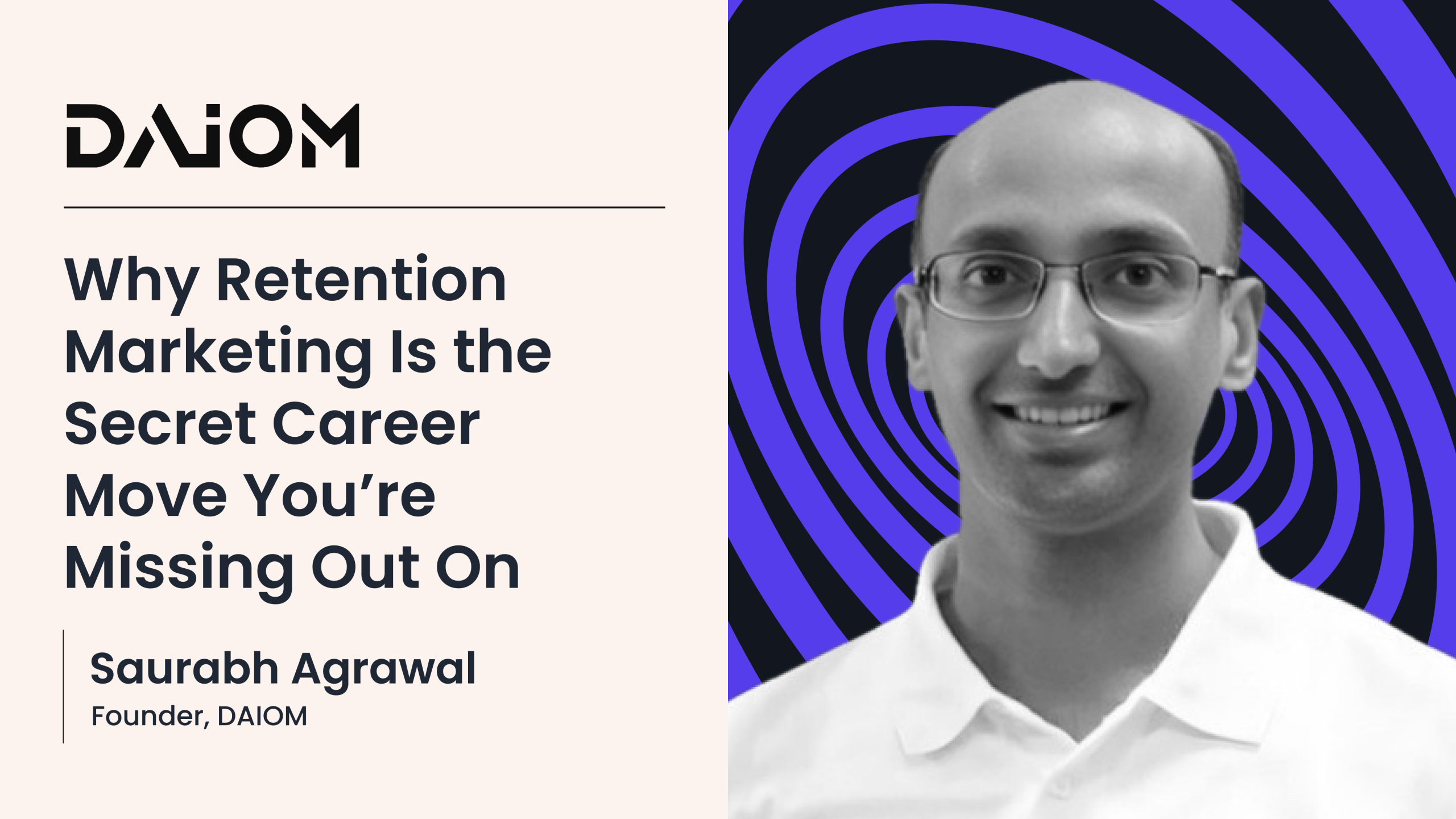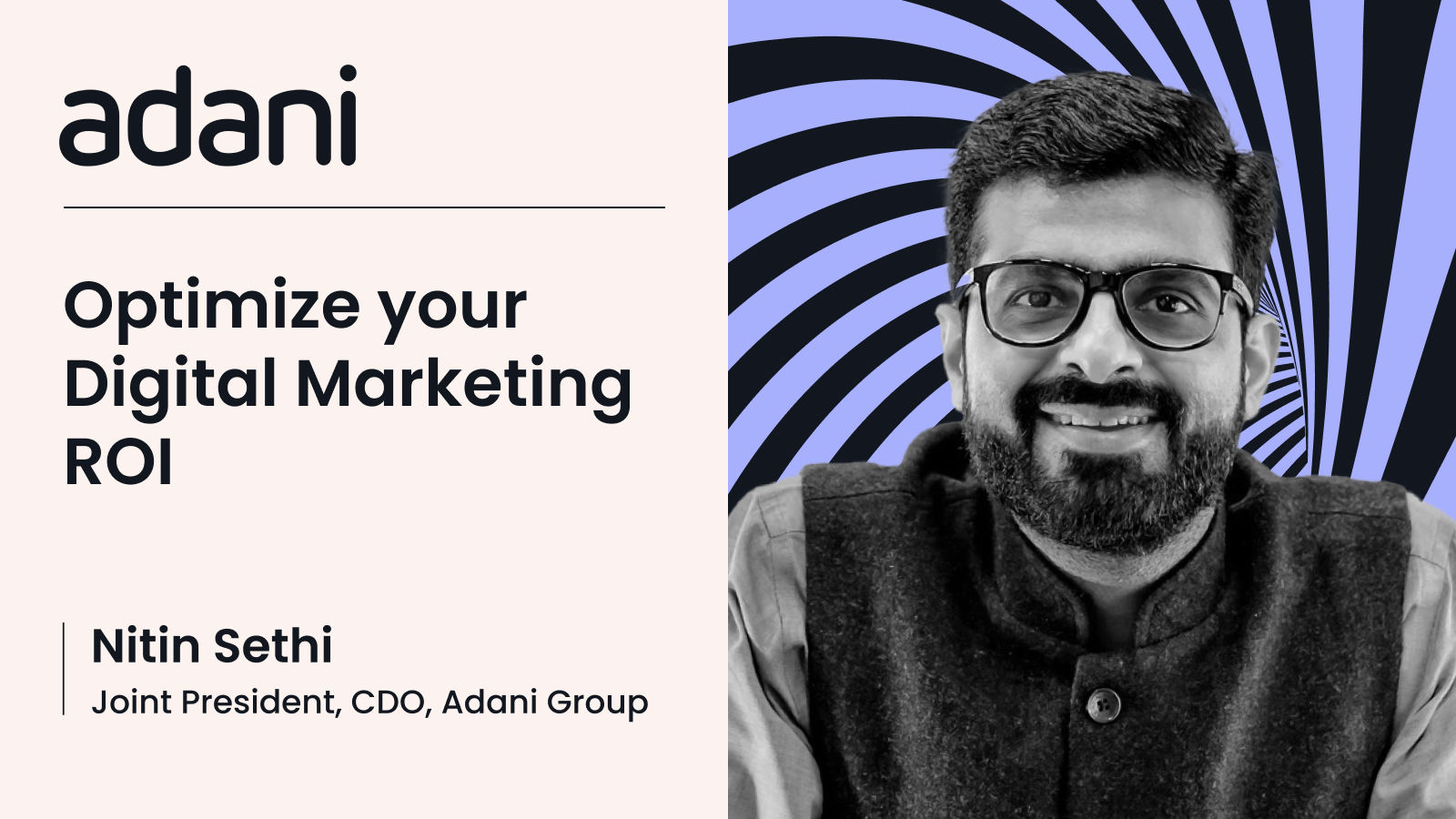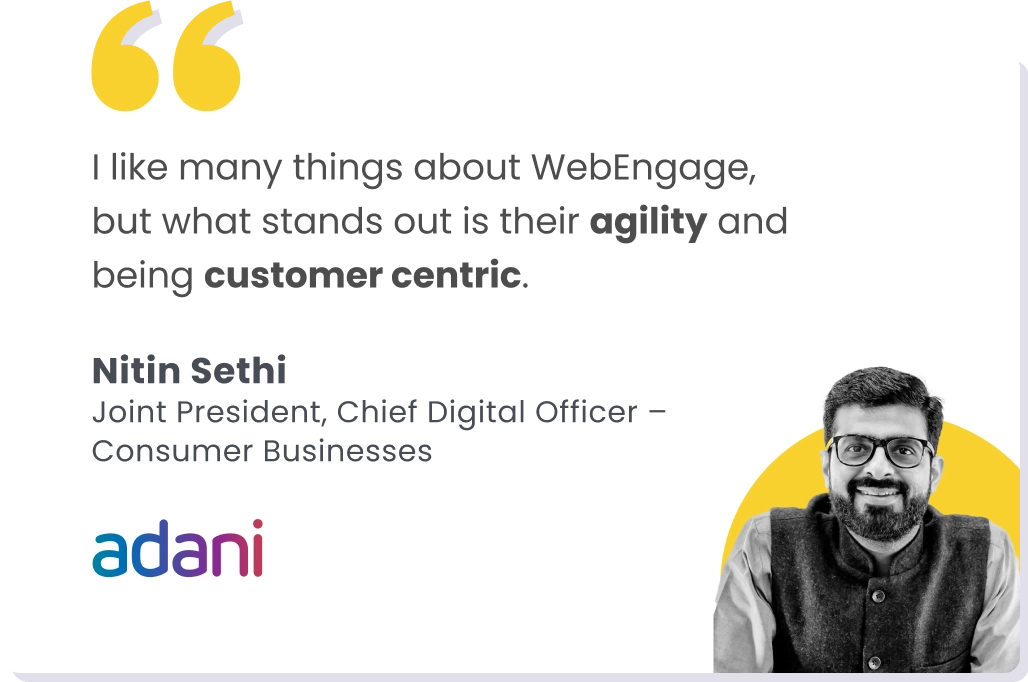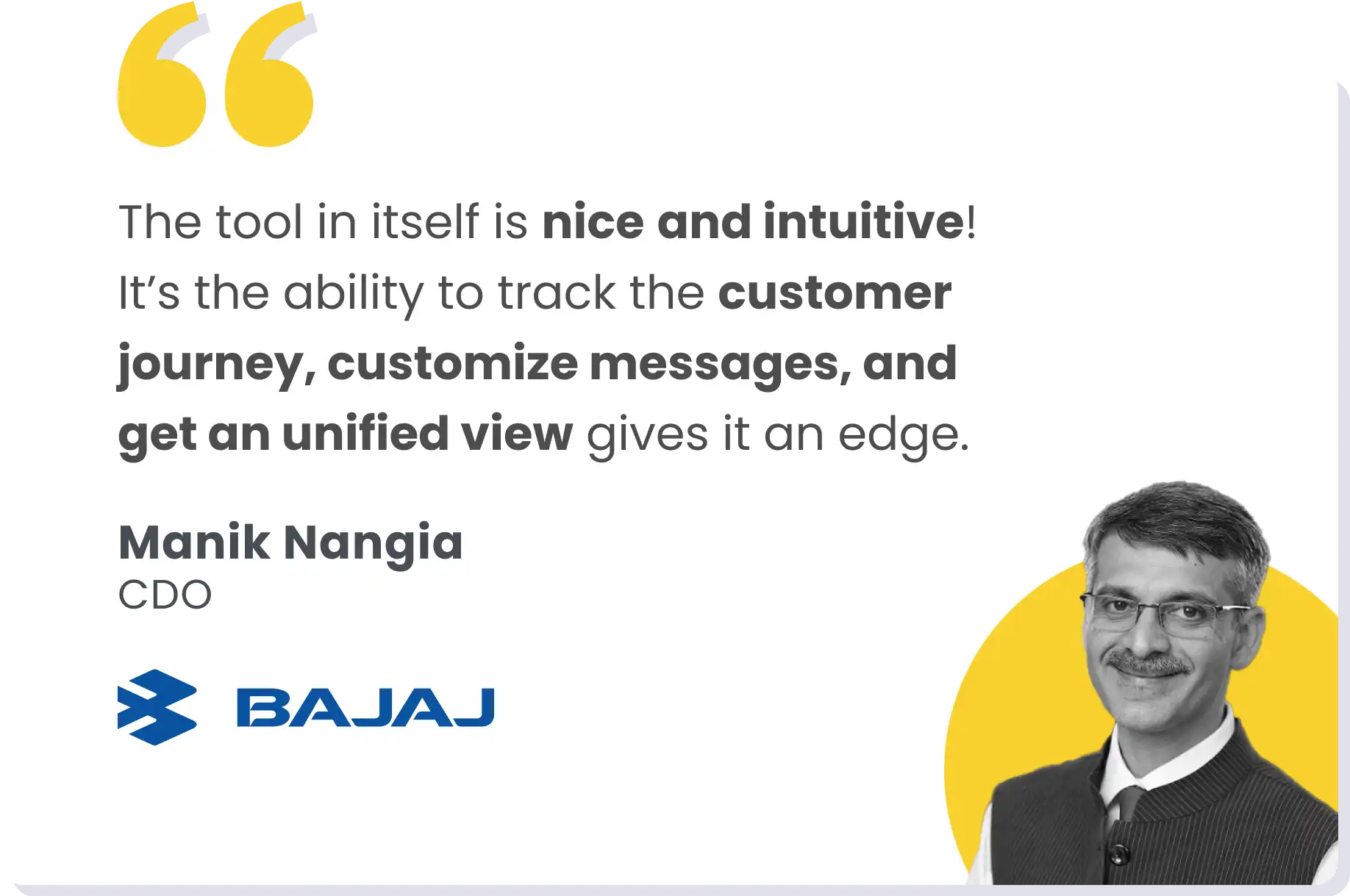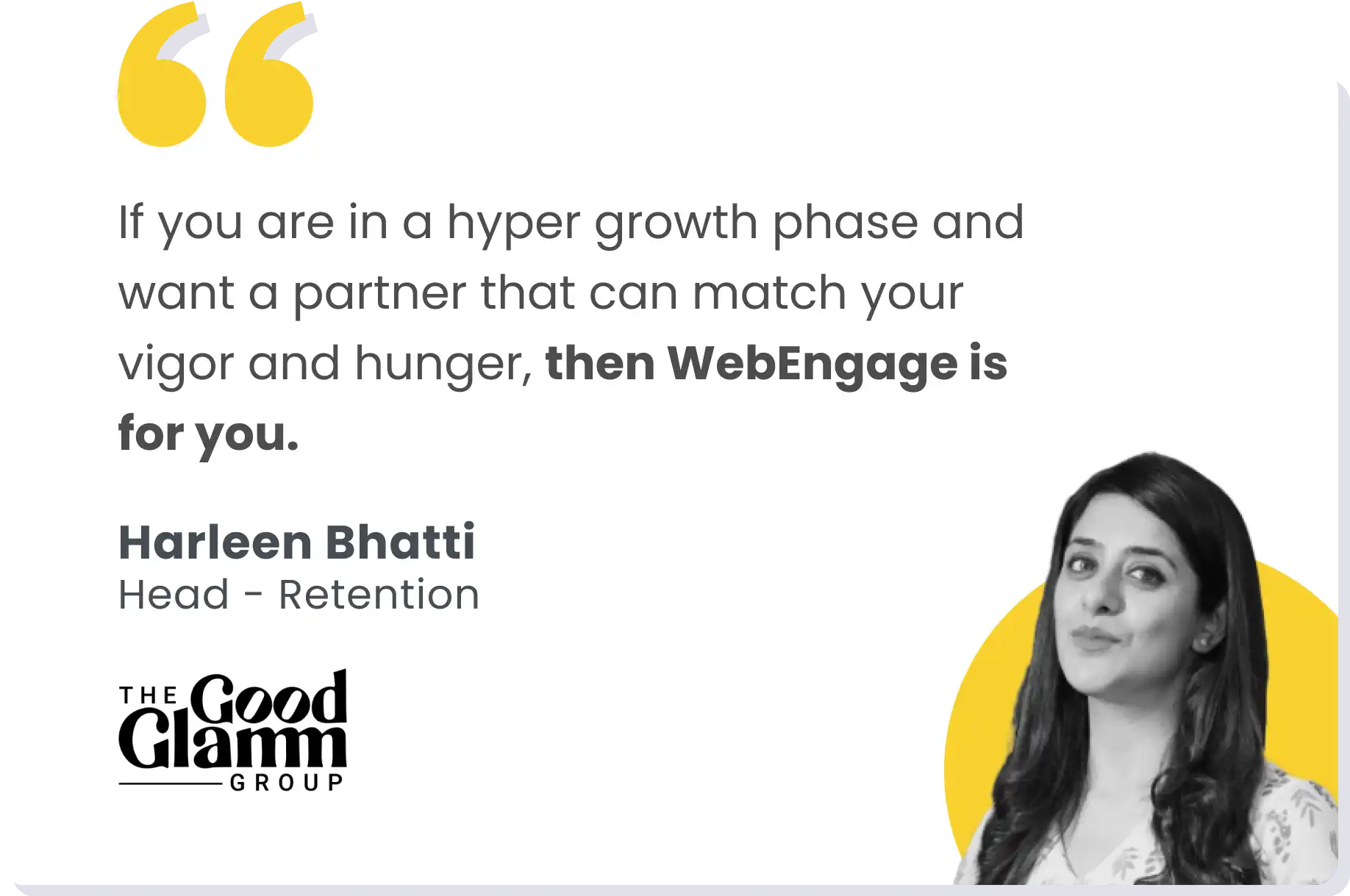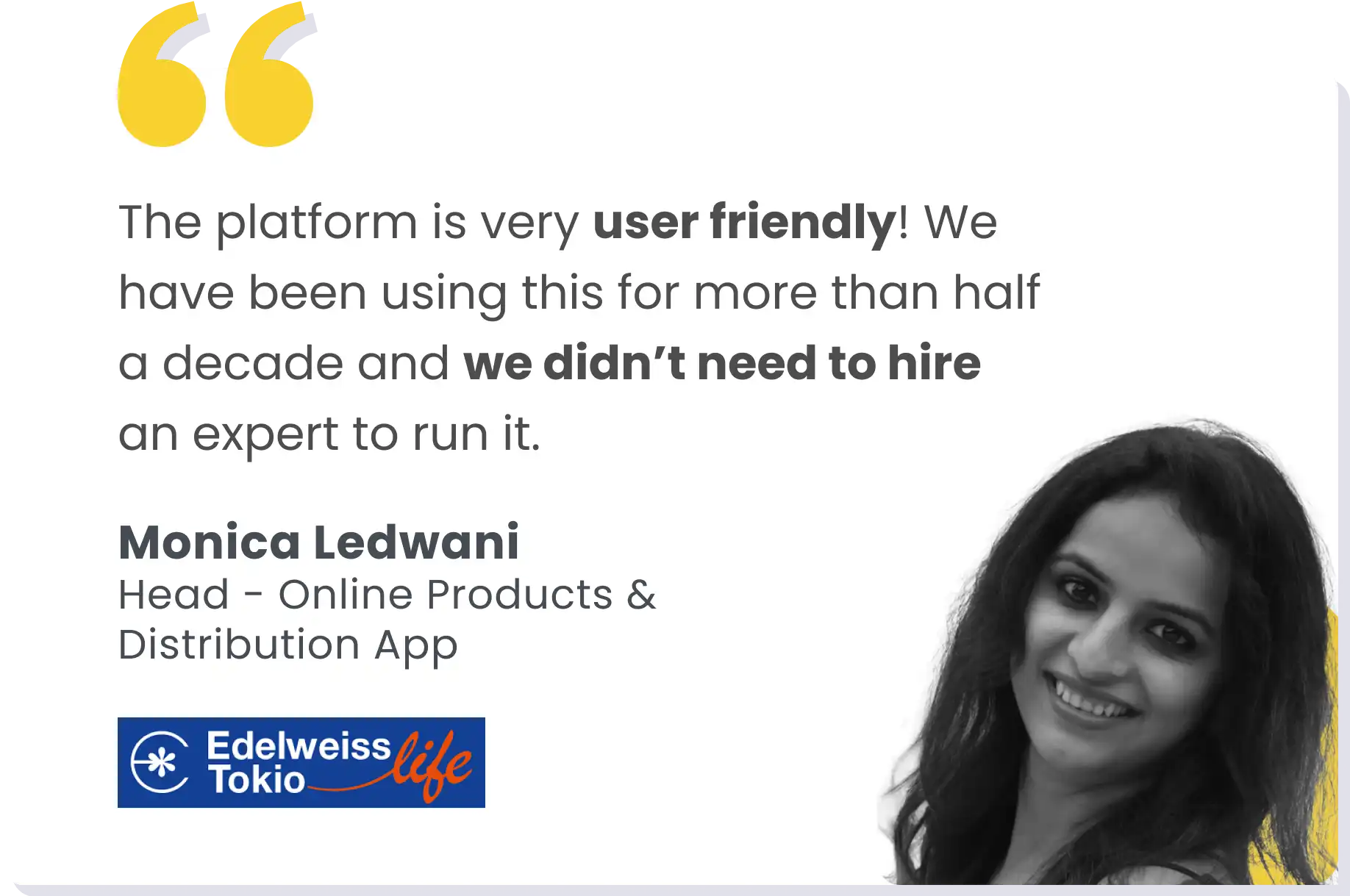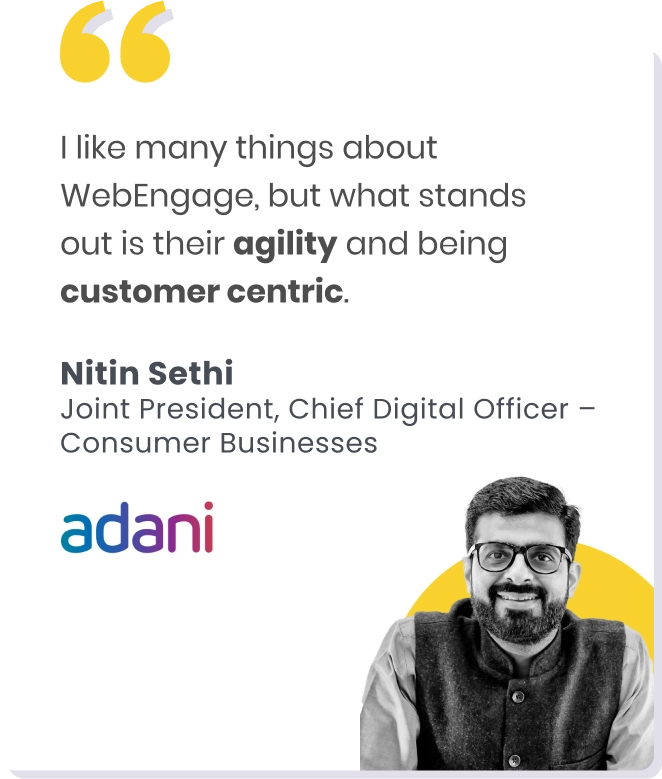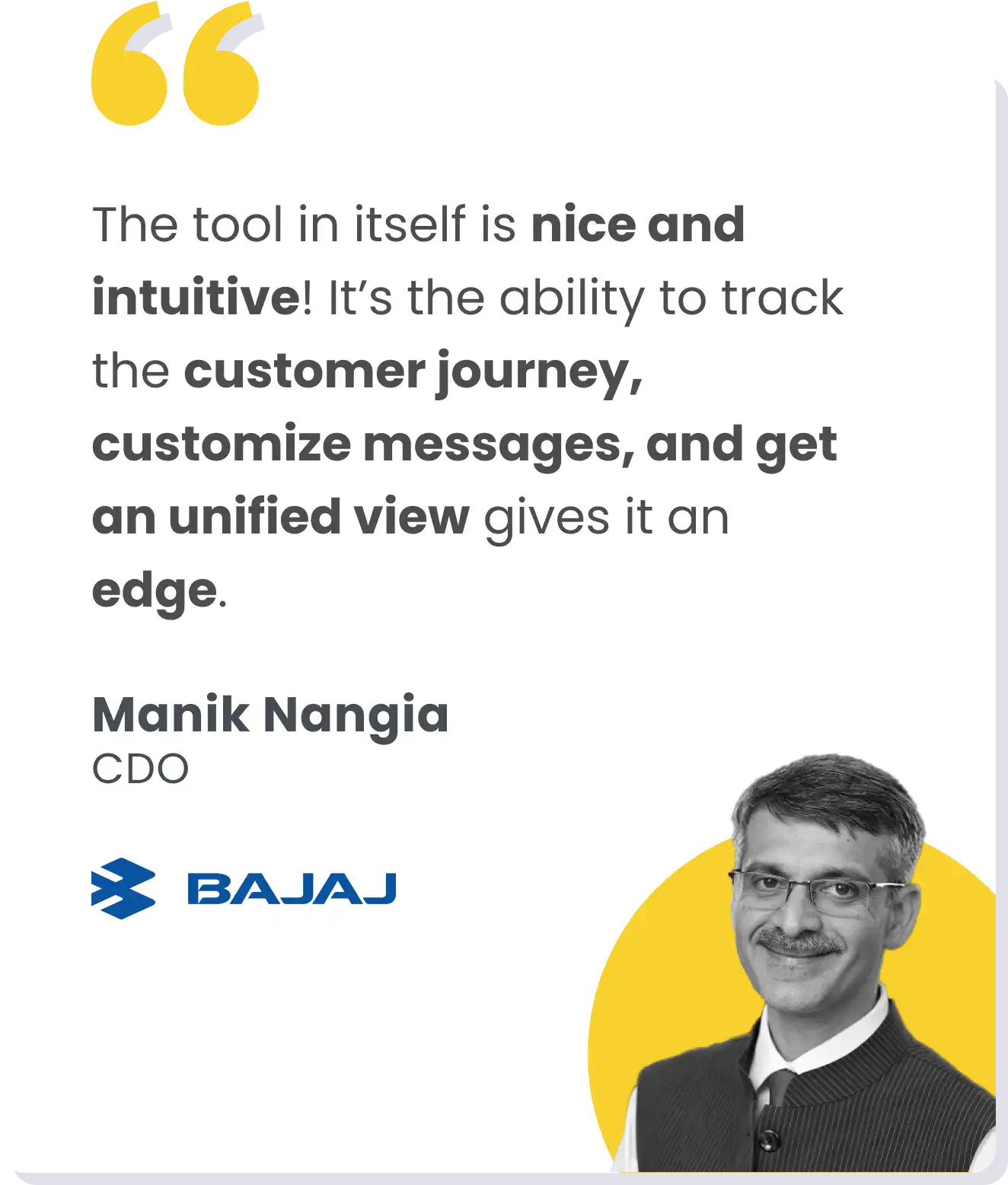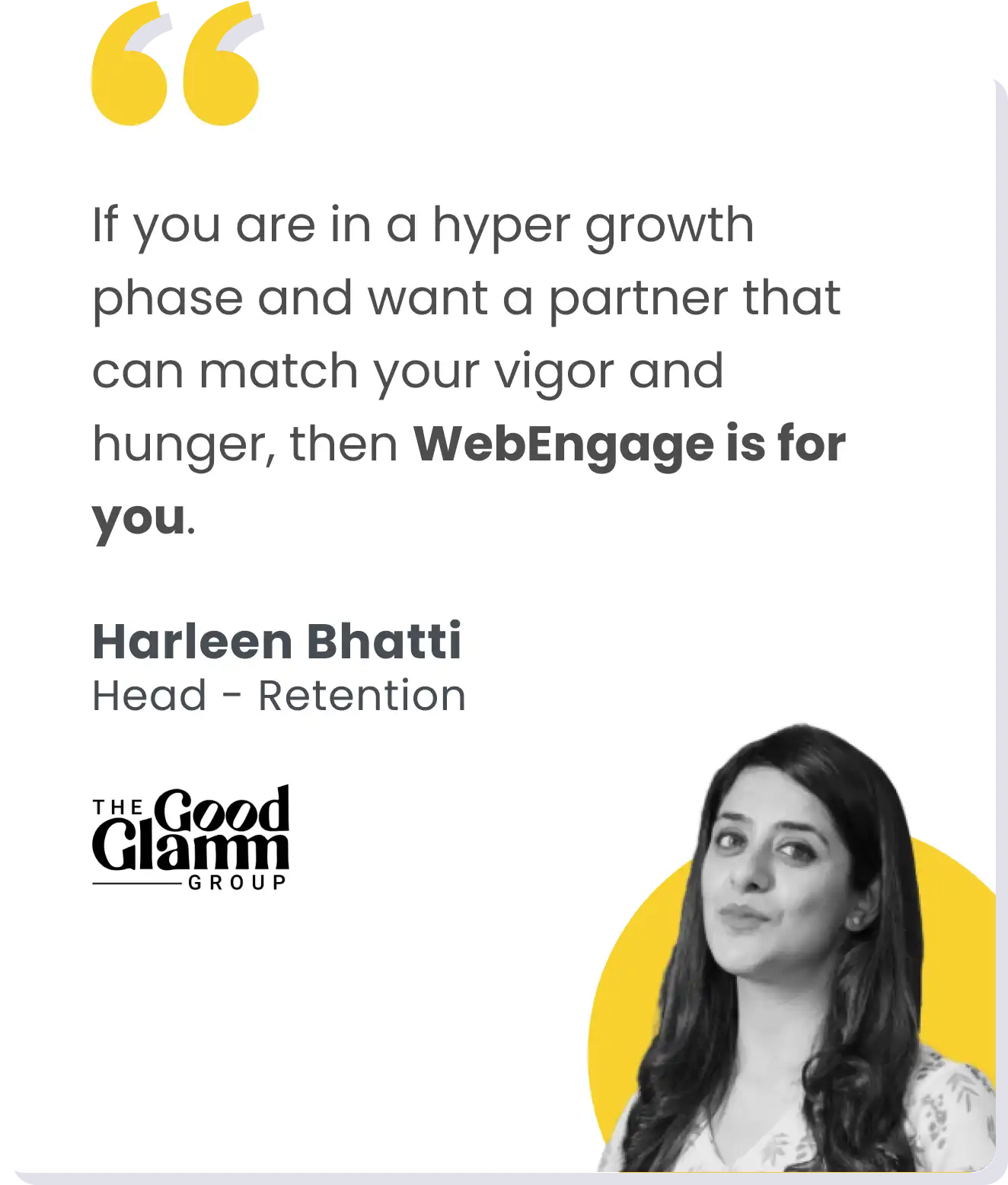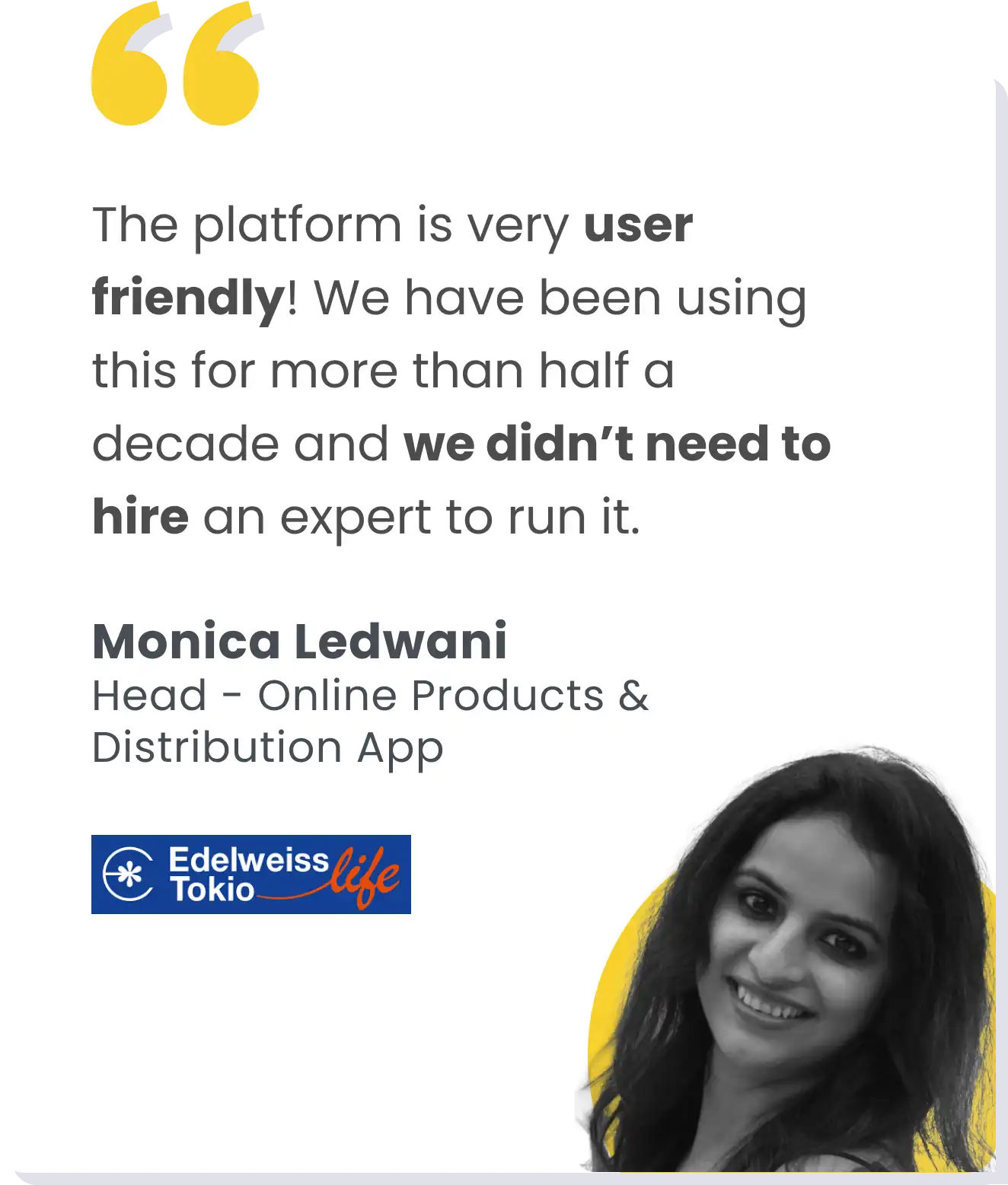In banking, retention is where the money is made, and acquisition is where the opportunity to make money becomes real.
As VP of Growth Marketing and MarTech at HDFC, I’ve spent years focusing on how to bring together marketing and customer experience. The crux of the story is that a seamless customer journey is critical— without it, any marketing effort is like plugging holes in a sinking ship. But to always be ahead of the curve, here’s what you need to do:
- Have a cross-functional approach: I learned that marketing isn’t just about generating leads; it involves working closely with sales, understanding processes & building incentive structures.
- Understand the funnel: While performance marketing can bring in a lot of leads, I realized that without a strong conversion strategy, the funnel can be unforgiving, and many leads won’t convert, affecting ROI.
- Build holistic strategy: To ensure a good ROI, I found that a well-rounded approach is essential, focusing not just on lead generation but also on how well downstream sales operations perform.
In this discussion, we will be juicing out my 20 years in the industry, exploring retention strategies and that segmentation in the BFSI sector isn’t just buzzwords—they’re the driver of sustainable growth.
The changing landscape
When I look at marketing today, it’s clear that performance marketing has evolved far beyond just bringing customers in. It’s about what happens after you’ve got their attention.
If we don’t create a frictionless experience, we lose them. At HDFC, we’re focusing on how MarTech integrates with CRM and customer fulfillment, tying together both customer engagement and operational efficiencies.
Our team is tackling these challenges head-on by focusing on MarTech solutions that optimize not just how we market, but how we fulfil the customer promise. The future, as I see it, lies in automation that spans the entire lifecycle—capturing, engaging, and nurturing customers throughout their journey with us.
Breathing digital disruption in banking
In my role, it’s clear that advertising alone isn’t going to drive real growth—we need to solve operational challenges to scale effectively. When I worked with IDFC, one of the first things we tackled was digitizing accounts and fixed deposit opening processes.
Automating these processes allowed us to significantly reduce costs while improving customer experience. Our ability to leverage Aadhaar for quick KYC checks minimized friction, leading to increased conversions and fewer drop-offs.
That experience taught me that digital disruption isn’t just about being tech-savvy—it’s about solving the real bottlenecks in customer journeys.
The anatomy of digital banking
In banking, customer experience isn’t owned by one team. It’s a collaborative effort that must align with the goals of the CDO, CIO, and CMO. At HDFC, we focus on ensuring that marketing, digital transformation, and tech investments all work in tandem to create an optimal experience. The CMO is now focused on revenue growth, not just brand awareness, and MarTech is playing a central role in driving that.
We’ve streamlined our processes using low-code platforms and A/B testing, which allows us to make quick adjustments and optimize the customer experience. This collaboration between marketing, tech, and digital transformation has been key to our success.
Digital and branch banking
The most relevant argument is that traditional banks, while historically focused on mature financial products, may lag in technology. However, with the availability of enterprise software, banks can quickly evolve and modernize their services, balancing the advantages of established infrastructure with technological innovation.
While FinTechs excel in innovation at smaller scales, banks can scale solutions nationwide, leading to a future where both FinTechs and traditional banks coexist. This shift requires banks to adapt quickly, but they have the tools and resources to compete effectively in a digital-first landscape.
Despite the digital push, we can’t discount the value of physical branches. While digital adoption is growing, many customers still trust branch-based services. At HDFC, we’re focused on reducing the cost of distribution while maintaining that trust. It’s a balance between offering the convenience of digital and the reassurance of personal, in-branch service.
Ethics in Marketing
Customer retention is where real profitability lies, and that’s where our efforts are focused. It’s not about acquiring customers through flashy offers or discounts only to see them leave once the incentives dry up. We are careful about the customers we acquire, ensuring that our acquisition strategies are not just volume-driven but also value-focused.
For us, every additional product a customer uses—whether it’s a credit card, a loan, or a fixed deposit—increases their lifetime value to the bank. That’s why we focus on omnichannel interactions, personalized recommendations, and seamless journeys to keep customers engaged. It’s about being strategic in how we grow our customer base while maximizing the value of each relationship.
Viewing marketing as a revenue generator
“Marketers are not just creative centers; they are profit centers.”
Driving profitability isn’t just an internal goal—it benefits the customers as well, creating a loop of growth. How, you may ask?
- By adopting customer-centric evolution: I recognize that improving customer experience requires both organizational restructuring and dissolving vertical silos.
- Data and AI focus: From a technology and AI perspective, the next step involves using data more effectively to enhance customer experience and drive retention, but this requires collective internal buy-in.
- Internal selling: Getting stakeholders on board requires demonstrating how customer-centric strategies lead to profitability and avoiding falling behind in the competitive landscape.
At HDFC, we are using all of this and more to drive revenue, reduce costs, and enhance customer engagement. This approach allows us to maintain our leadership position in the retention marketing space, and I believe more banks will need to adapt it to remain competitive.
As a team, our focus should extend beyond media spending to include technology investments, which reduce distribution costs and create a more efficient P&L structure. This shift in mindset—from marketing as communication to marketing as a revenue driver—is essential.
About the author:
Deepak Oram, VP of Growth and Martech at HDFC Bank, spearheads efforts to digitize the customer journey across lending, payments, and investments, driving substantial digital revenue through innovative growth marketing strategies.
With extensive experience at major banks like ICICI and IDFC, Deepak is deeply committed to enhancing customer experiences and delivering impactful results in the banking sector.





